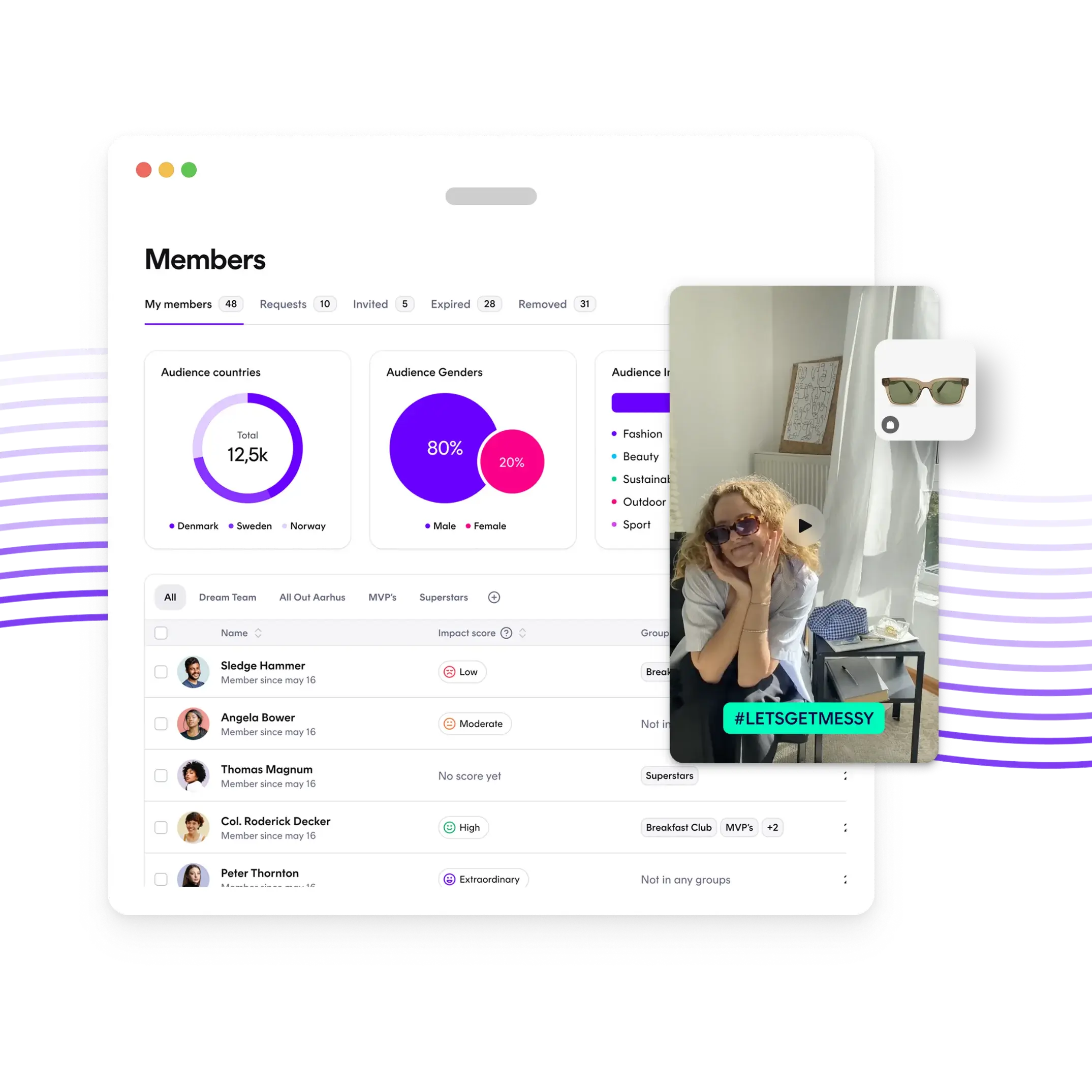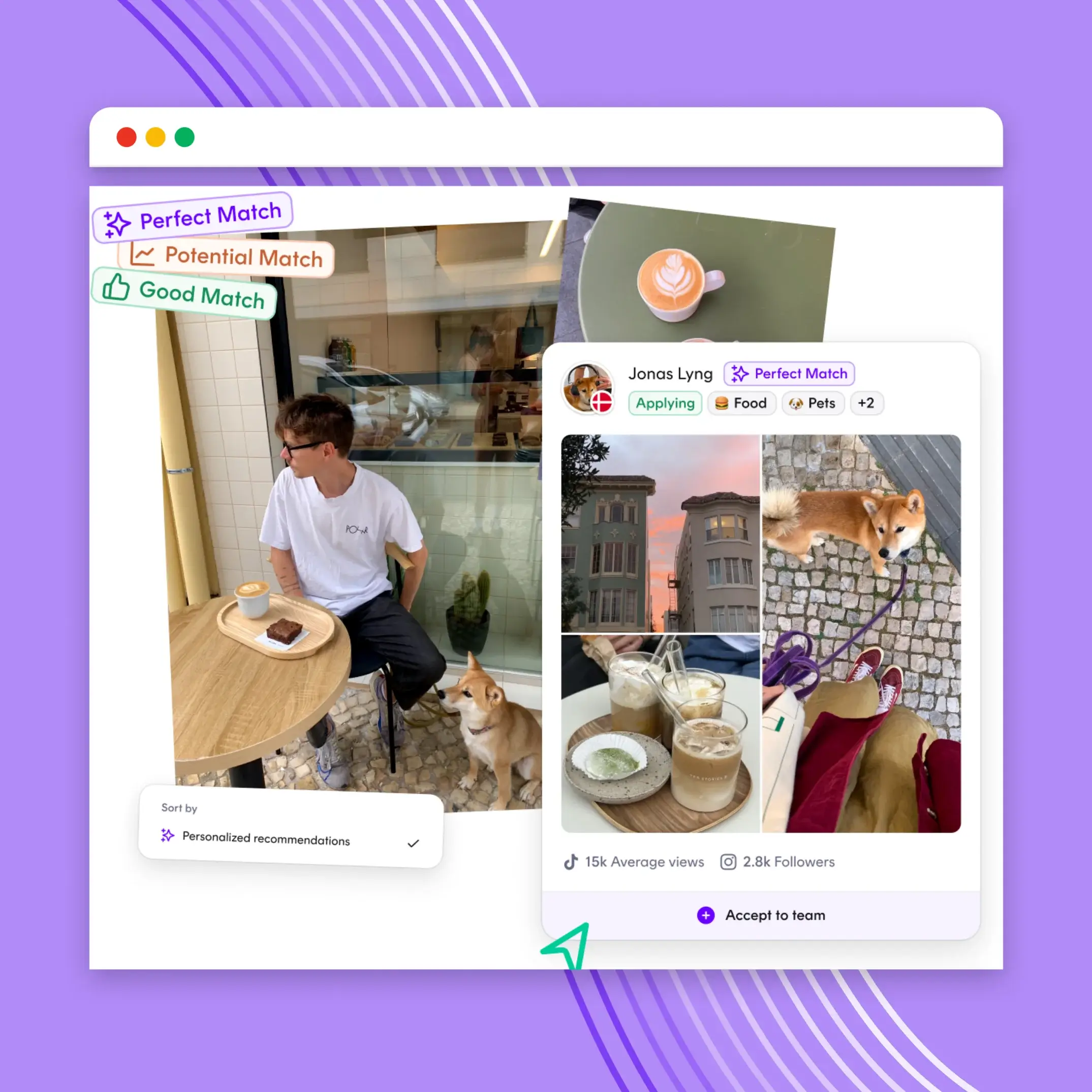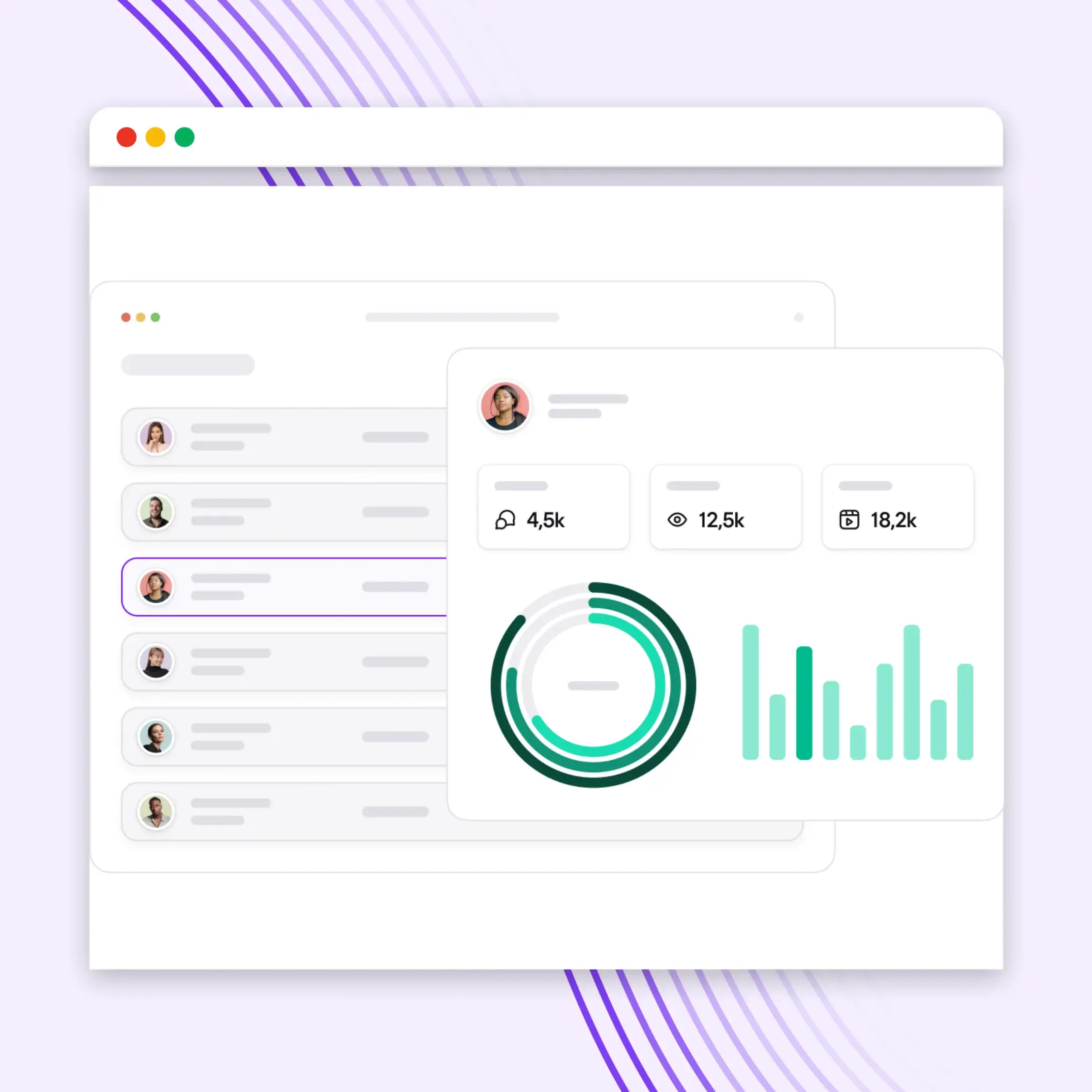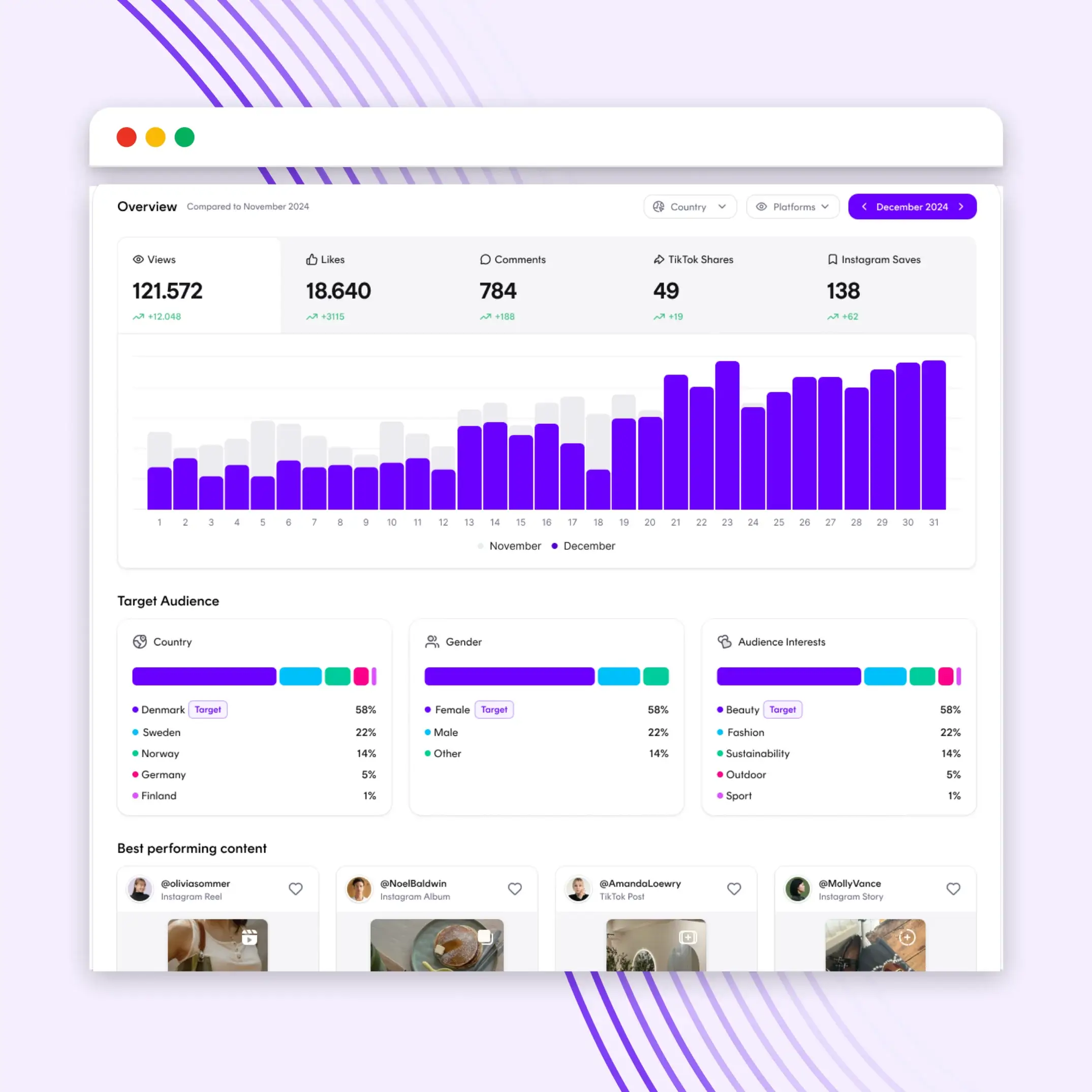Manage all your influencer marketing efforts from start to finish with an all-in-one influencer marketing platform: discover influencers, build strong relationships, run campaigns, track content, pay your creators, and analyse results.

Trusted by 850+ brands




























































Build and scale your influencer marketing with a team of thousands of verified influencers and micro-influencers who vibe and collaborate with your brand.
Simplify the nitty-gritty tasks like campaign and compensation management, with task assignment, automatic payments, vouchers and customised rewards.
Gain insights into all the content your influencers post on their social media and the key demographic aspects of your influencer campaigns.
Discover influencers that fit your brand’s needs based on criteria like location, interests, gender, or audience demographics. Leverage a network of verified influencers and global search to build a customised team of creators for your brand, taking away the guesswork and helping you build relevant ambassador teams faster. Resulting in more accurate targeting, improved campaign performance, and valuable time saved.
⭐ 300 million creators worldwide
⭐ 18.000+ verified influencers ready to work with you
⭐ 20+ criteria and filters
⭐ AI matchmaking between influencers and brands

Manage long-term relationships with verified influencers. Filter them by status, channel, or region, and target your communication to the right people. You can also create internal groups to invite specific influencers to campaigns. Track all influencer content automatically and keep everything organised in a central content library. This makes it simple to reuse influencer-generated content across channels, maintain consistency in messaging, and reduce the manual work of handling the influencers.

"Peer-to-peer influencer marketing has proven to be a very effective way for us to help create brand awareness and generate sales. The continuous content from the ongoing campaigns also help us on a day to day basis so we are consistently able to post content on our social media platforms. We broke our records for our subscription K-Beauty Box right after we started using Flowbox."
Read case study
Set up assignments on Instagram and TikTok that allow you to communicate tasks to influencers directly in the apps. The generated content is automatically tracked on the platform, giving you full visibility across multiple campaigns and collaborations all in one place. This reduces the need for manual follow-up, helps you stay on top of deadlines, and ensures that every campaign runs smoothly from start to finish.

"The collaboration with Flowbox has been a key part of our summer campaign for iced coffee, where together we’ve managed to create strong awareness of our iced coffee within the target audience in an easy and effective way."
Read case study
Understand the daily performance of your influencers and campaigns, worldwide or in specific countries. Manage influencer compensation directly on the platform by automating digital payments and vouchers for your webshop, or by defining custom rewards. The tool also allows you to ensure efficient influencer marketing workflows, analyse campaign results and simplify financial and legal administration.

"With this campaign, we have received varied, high-quality content from creators, which has delivered strong results both organically and as part of our advertising. One of the advantages of Flowbox is that the creators on our team can work from the same campaign brief and still deliver such diverse content that appeals to different audiences, highlighting the benefits of downloading our app."
Read case study
Frequently asked questions about influencer marketing platforms
What is an influencer marketing platform and how can it help my brand?
How do I find the right influencers for my brand using a platform?
Can the platform help me manage multiple influencer campaigns efficiently?
How can I measure the performance and ROI of influencer campaigns?
Can influencer platforms help avoid fake or low-quality influencers?
How does an influencer marketing platform handle content rights management?
Is it worth using an influencer marketing platform for a small or medium-sized brand?